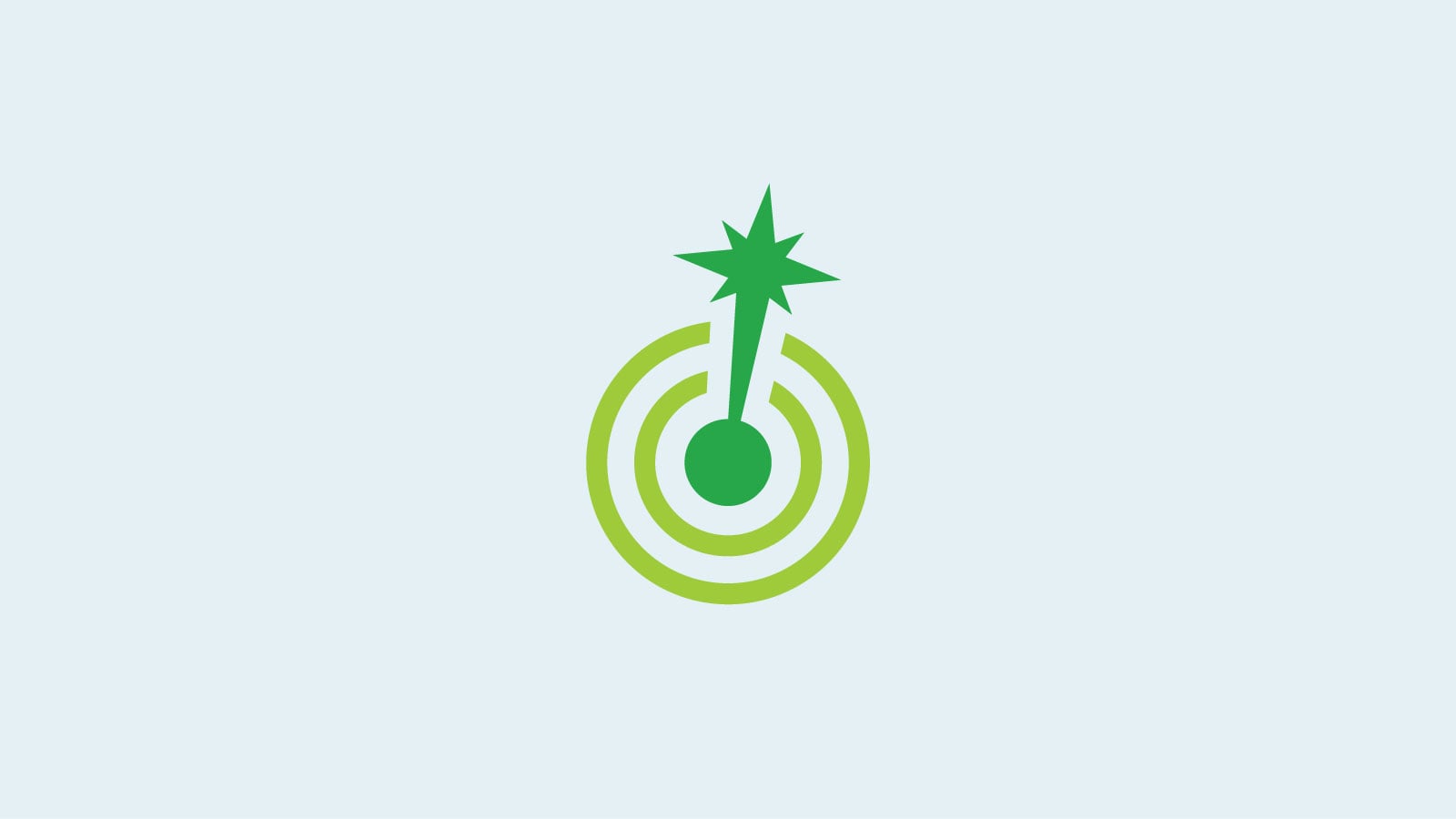
Messaging that will resonate—it’s every marketer’s aim. But to be effective, it must be aligned with whichever unique stage of the buyer’s journey your customer is in. When you deeply understand your audience and know how to deliver empathy, clarity, and value at each stage, then you’ll likely see the conversions you’re trying to generate.
A goal for every message
For every interaction you create with a customer, there should be a specific goal. Of course, the main one is to convert, but to get there, you need to break it down into more nuanced messaging at each stage.
We’ve all witnessed this at a brick-and-mortar business. A customer walks in, perhaps with the intention of just browsing, and then a salesperson takes too aggressive an approach, discouraging the sale altogether. This buyer, who is at the Awareness (or maybe Consideration) stage, needs time to discover and consider their options.
In contrast, there’s the customer who rushes in knowing they just want to buy a white t-shirt in a specific size. They’re already at the decision phase and don’t need to weigh their options. In this case, they’re looking for a ready-to-go salesperson to point them in the right direction.
In an eCommerce setting, these examples still hold. The first customer wants to browse content, learn more, and explore options, while the second is headed straight to checkout. Your brand’s messaging needs to meet all of these needs, which is not always a simple task. Let’s take a look at how to make it happen for each critical stage.

Messaging for the awareness stage with examples
Oh hey, nice to meet you! This is the very first stage where you welcome a potential buyer. This is where your customer becomes aware they have a problem that needs solving and that your business has potential solutions.
Your goal is to move them to the next stage of interest. But what’s their goal? They’re digging into the problem, whether it’s finding greener cleaner for their kitchen or accounting solutions for their small business. Maybe they’ve already identified the issue or maybe it’s your job to gently agitate and lead them there. In either case, here are some pointers for Awareness stage messaging.
Leveraging your brand voice
If you already have buyer personas or archetypes for your brand, now is the time to lean in. Your target consumers will respond best to the right kind of tone and language. If you want your messaging to resonate, you need to determine what that is and put it to use in your copy. Ask yourself, where does your brand’s voice need to land on a scale from totally serious to completely irreverent?
The voice and tone you choose will invite your buyer to get to know you better and build a dialogue. As Forbes explained, “Particularly during the introduction stage, customers instinctively recognize the way they are addressed and spoken to, which then significantly impacts their entire view of a brand.”
For different types of businesses, there may be different inherent expectations. For example, a financial institution, which relies so heavily on building trust with consumers, will likely lean toward a confident, professional tone.
How do you identify the right one for your business?
- Get clear on your brand mission, what you stand for, and what you want to say.
- Get clear on who you’re writing for. Who are your buyers? What do they need?
- Get consistent. If this is the very first time you’re being intentional about your brand’s voice and tone, then make it explicit and ensure everyone on your team is putting messaging out there with the same intention.
- Adjust as needed. Audience not responding? Is it something I said? To be honest, quite possibly. It takes time to tailor what your brand sounds like. But it’s worth it.
Need some inspiration to get you started? Grammarly has great examples that illustrate the range of styles various brands adopt. No matter the style you choose, remember that clarity always wins, so keeping things concise and focusing on value is a good way to go.
A little empathy goes a long way
“Dealing with back pain that just won’t quit? We understand how that can impact every aspect of your life.” This kind of immediate empathy makes a buyer nod and continue on. The more specific you get, the better understood your buyer will feel.
A good place to start? Define the problem (and any variations) yourself. List out the potential impacts on your target customer so that you can create messaging that will resonate. Here’s a great example.
A customer just got turned down for a car loan because they have zero credit. They arrive at the search bar in hopes of working out their problem. In their mind, the issue isn’t that they have no credit. It’s that they weren’t able to get the car they wanted. The credit is just what’s standing in the way.
Getting to the meat of the customer’s dilemma depends on the complexity of their problem and your brand’s solution. Imagine buyer problems plotted on a graph with axes of high vs. low awareness and high vs. low irritation. The higher the awareness and irritation, the easier it tends to be to get your message heard. When you’re starting on the lower end, you have more work to do to get your message across.

Agitate then solve
Sometimes a problem isn’t obvious to the target customer until you name it. This falls in line with a standard copywriting formula known as PAS or Problem, Agitate, Solution. If your customer hasn’t yet realized they are unserved or underserved in a key area of their life, agitating the problem could be your most effective move.
Take a target customer that still uses a manual Excel spreadsheet to manage all of their finances. Their system works, but they may not even realize how time-consuming it is. The right software company could lead them into the Awareness stage with something as simple as: “Using Excel to manage your accounting is costing you an extra 20 hours per month.”
Now the customer is thinking about what they would do with those extra 20 hours. They have a new awareness that the system they’re using is not the most efficient, even if they’re proficient in it. There might even be additional problems to agitate. Using the Excel example: “Tired of missing manual entries in Excel?” Consider all the possible implications for the customer.
Problems that need agitating to get attention are often referred to as “low awareness, low irritation.” You need to stir that awareness and irritation to get the customer curious.
Give them the goods
Customers in the Interest stage are looking for answers, so it’s important to be clear and detailed with your messaging. The buyer may still need to determine their problem more precisely and aims to pinpoint it through research. They begin to explore their options and various ways their problem can be solved. At this stage the buyer may be asking themselves:
- What is my problem?
- What’s causing it?
- Am I on my own? How many other people experience the same thing?
- Can this problem be solved? What’s the best way forward?
Data, resources, and testimonials can help make the buyer feel better informed and more prepared to address the issue. Here are a few types of informative content that can offer value to customers in this stage:
- Educational and informative Blog posts
- Educational and How-To Videos
- Brand videos that highlight your company’s values and mission
- Documentaries that show the real impact of your business
- Lead Magnets
- Infographics

The key word here is value. Remember that you should have a goal for every piece of content along the way. For example, perhaps you can help your customer take some of the initial steps to solve their problem while encouraging them to learn more about how you can offer a comprehensive solution. This builds trust, as well as resources, and engages customers in relationship-building with your brand.
Messaging for the consideration stage with examples
Congrats, you’ve intrigued your audience! Once in the Consideration stage, the buyer has clarity around their problem and has begun actively seeking solutions. The prospect realizes their old Excel method for accounting is inefficient and starts asking: “What can I use instead?”
Think of this moment as a period of evaluation. Customers are determining whether your product or service is the right fit for them. You can assume that even if yours was the first business to bring them awareness of their problem, they’re probably still going to look at competitors, too.
Once again, this phase varies in complexity based on the nuance of the problem being addressed and what the solution entails. Put yourself in your customer’s shoes to understand how quickly they’re likely to move through the Consideration phase and what resources they might need. This is another place where knowing your audience makes a critical difference. Here are some ways to assist in their research and help make your brand the easy choice.
Show them how it works
Let your product or service speak for itself. Exactly how does your solution work and how will it directly solve the problem? To share the answer, you might create quick video demonstrations or include a demo on a webinar.
For products that lend themselves well to photography, showcasing on Instagram or other image-rich social media can be a great approach. There are so many brands to check out for inspiration. If you want to get a little meta (a picture of a picture), Canon showcases images and describes the camera type, lens, and settings used to capture the shot. Fashion is another go-to where you can see time-tested brands, like Levi’s, showing their clothes being worn out in the wild.
This can even be done with products that are less straightforward, such as software solutions. Short clips or GIFs can show the product in action. When a consumer sees how something functions and better yet, how the user feels thanks to its capabilities, it invites them to imagine what their own experience could be.
Show them who you’re up against
With Google at their fingertips, it’s a given that potential buyers are going to consider their options by exploring competitors. Providing a comparison for them helps build transparency and trust and guides customers toward choosing your product or service for the right reasons. This can be as simple as a straight-up product comparison—a list or table that compares features and benefits.
It’s an opportunity to highlight differences that make you a better fit than the other options out there. But remember, it’s not always about having the most features. In the software world, for example, sometimes the bigger solutions with many features are overwhelming for smaller customers. You could instead emphasize why your solution is the “right size” for them. This again goes back to knowing who you’re creating a dialogue with.
Another way you can more subtly stand out from competitors is through providing thought leadership content or content that demonstrates your expertise. Providing value in this way is another worthwhile strategy for setting yourself apart. It communicates that you’re knowledgeable and that you care about your customers.
Consider where you’ll find them. Is it on a certain social platform, in a particular marketplace, or in specific online groups or forums? These are the places where you can show up to offer insight and engage during the customer’s journey.
Show them who benefits
The proof is in the pudding as they say. Or in this case, the best evidence of your product or service’s efficacy is in case studies of how it has already worked. Real-life examples, supporting data, and testimonials provide the social proof that we know buyers look to for reassurance before committing to a purchase. They want to know other people like them have already taken the leap and been satisfied with their decision.
To emphasize the importance of this essential piece of the messaging puzzle, here are a couple striking statistics from FinancesOnline:
- 93.4% of consumers rely on customer reviews when dealing with retailers they’re not familiar with
- 93% read online reviews first before deciding to buy a product or not
They’ve also noted an increase in this behavior with online buying since the start of the pandemic in 2020.
One tip for serving up social proof that counts is to center it around a problem that’s important to your customers. Proven numbers and data are highly appealing and reassuring to buyers, so include whenever possible. For example, if your product helps businesses to grow their leads, an engaging title might be: “How XYZ Grew Their Leads 175% with [Product/Business].”
User-generated content is another opportunity that fits within this category. Let your customers show their love for your product or service themselves. This is especially effective in the B2C space, where customers can spotlight your products online. There are fun and engaging ways to incentivize this, as well. You might launch a unique hashtag and encourage customers to post with it. As a follow-up, draw a name to win a random prize.
Each of these intentional interactions nurtures those who are already in a conversation with your brand. And at the same time, it encourages the kind of community that makes newcomers feel welcome and confident in your business.
Offer a firsthand experience
How many times have you bought a new food or beverage product after trying a free sample? Costco is famous for its sample stations that reel customers in and encourage them to buy.
At the Consideration stage, creating a way for people to experience your product or service can help move them toward a final decision. Depending on your product, you might not be able to give out free samples, but there are other ways to be creative.
- Furniture companies offer augmented reality apps that customers use to visualize furniture in their own space.
- Paint companies provide sticky paint swatches to try at home.
- Software companies serve up a free trial period or personalized demo.
- Cosmetics companies mail out mini samples.
- And let’s not forget vouchers, which work across industries. Often exchanged for a lead’s email address, vouchers give curious buyer’s a chance to try free or discounted product and hopefully get excited about it.
Is there a way your business can let people try before they buy? Increasingly, eCommerce companies are taking this route and seeing results through their conversions.
Messaging for the decision stage with examples

Yes! Your buyer is on the cusp of making a purchase decision. Your key goal at this stage is to get them to purchase with you. This is where a salesperson can find success because now their customer is a much warmer prospect than they were way back at the Awareness stage.
Here, the customer has zeroed in on your product or service, and they’re looking to confirm that it will meet their needs. For big ticket products or services, talking with a salesperson is often a must. If this is the case for your brand, it’s important that you’re easy to get hold of for customers reaching a decision.
For smaller purchases, this is the place to reaffirm how this solution will serve them and create a satisfying experience. During the Decision stage, it’s all about being the right fit for them. To accomplish this, you may need to address last-minute objections that pop up. Anticipate this based on the behavior of past buyers and provide the answers right within your messaging.
Now is the moment to:
Emphasize any guarantees or warranties
Whether the customer can return a product or what they can do if they’re not satisfied can be one of those last-minute objections. If you offer any sort of guarantee or warranty, be sure to emphasize it here.
Book a consultation
A free consultation may be appropriate for certain products or services, especially if they’re the sort that are very customized to the buyer. A free consultation gives the customer an opportunity to ask any questions they have and advice about how the product or service will work for their situation.
Offer a free trial
Free trials are a smart option for many service-based businesses. You’ll often see a line like, “The first one’s on us!” to encourage purchasing. Letting the buyer take a test drive resolves any final doubts and answers the question: “But is this really the right solution for me?”
Come up with a coupon deal
If you need to get a customer across the finish line, a coupon makes an excellent final incentive. This is especially true if the offer is exclusive or time sensitive and inspires buying now. For example: “Buy a 12-month subscription now and pay for just 10 months!” A strategy like this helps ease any objections based on price.
Cover the Shipping
Along the same lines, online shoppers have really come to expect free shipping in most situations, unless they’re considering a large or high-end item. If there is a way to work free shipping into your sales model without damaging profit, you’ll likely find it goes a long way toward upping your conversions.
Final thoughts
Perhaps the most important point here is that messaging must be tailored to each stage, and you can only do this if you understand who your buyers are and where to find them. Many marketers make the mistake of focusing almost solely on brand awareness. But the lack of follow-through can leave consumers hanging with unanswered questions or objections. Other marketers skip straight to the decision stage which can generate immediate sales but often comes at a higher cost than reaching potential buyers earlier on. Generating a consistent flow of new contacts into the top of your marketing funnel and then nurturing them through to an eventual purchase is a much more cost-effective way to build your brand than overspending during the later stages. This can be particularly important if your product or service has a long sales cycle that requires multiple visits and touchpoints before a final decision is made.
If you’ve spent the last several minutes nodding along, don’t let that ah-ha moment fade. eCommerce leaders need to invest in their customers with the right support and messaging to give the buyer’s journey successful flow on both sides. This is the work Paragon Digital Marketing specializes in every day. If you’re ready to add value and communicate your brand on a completely new level, we’re here to help. Get in touch today to talk about your buyers’ journey.
Marketing Guides
Stay connected with updates on our work, what we’re learning, and life behind the scenes at Paragon.



